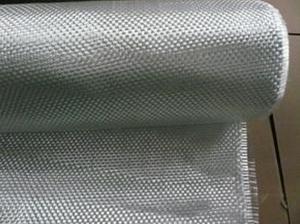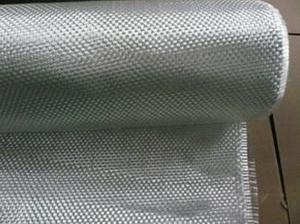Fiberglass Fabrics with Medium Silica
- Loading Port:
- China Main Port
- Payment Terms:
- TT or LC
- Min Order Qty:
- 2000kg kg
- Supply Capability:
- -
OKorder Service Pledge
OKorder Financial Service
You Might Also Like
1.Brief Introduction:
Medium silica fabrics can be used for a long period of time without changing their properties perat the temperature of 800℃ as it contains more than 70%±5% silica.
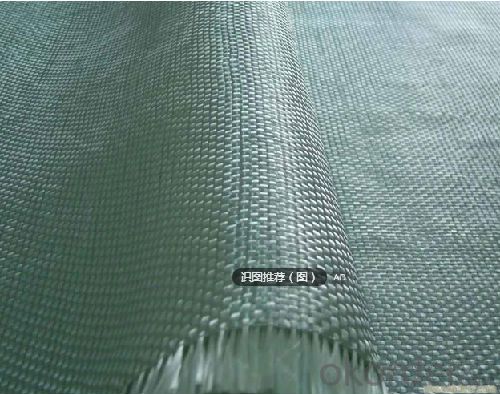
2.Properties
No asbestos orceramic,no harm to human
Low thermal conductivity,excellent thermal insulation
Superb electric insulation
Inert to majority of chemical reagents
Good flexibility
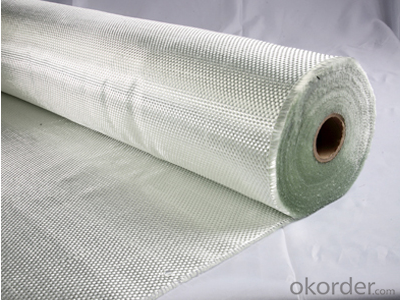
3.Application
Fire fighting
High temperature gas filtration
Thermal insulation
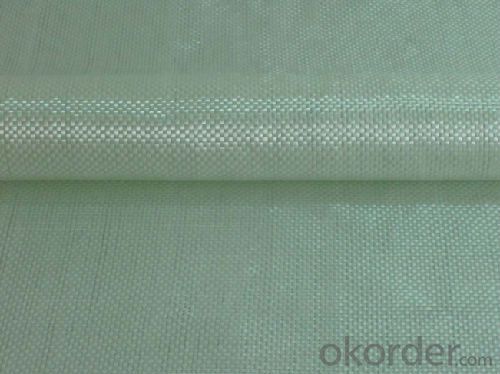
4.Specification
| Type | Weave Type | Area Weight | Width cm | Thickness | Warp Yarns/cm | Weft yarns/cm |
| RS-600 | Satin 8HS | 600±50 | 100 | 0.75±0.1 | 18±1 | 13±1 |
| RS-1100 | Satin 12HS | 1100±50 | 100 | 1.35±0.1 | 18±1 | 13±1 |
5.Package and Delivery Time.
Packed with carton and pallets.The products will be ready in 15-20 days after the order confirmation.
FAQ:
Delivery Detail: 15-21days
Other spec. can be custom made as per customer's request.
- Q:Can fiberglass fabric be used for making curtains or blinds?
- Yes, fiberglass fabric can be used for making curtains or blinds. It is a durable and versatile material that offers excellent light filtering and insulation properties, making it suitable for use in window coverings. Additionally, fiberglass fabric is resistant to fire, moisture, and fading, making it a practical choice for curtains or blinds in various settings.
- Q:Glass steel can be embedded parts
- The glass fiber cloth cut into the appropriate size of the strip, after a layer of paste resin soaked, until the lower embedded parts firmly bonded to the finished product.
- Q:What are the environmental considerations of using fiberglass fabric?
- Some of the environmental considerations of using fiberglass fabric include the potential release of hazardous chemicals during production, the energy-intensive manufacturing process, and the difficulty of recycling fiberglass materials. Additionally, fiberglass fabric is not biodegradable and can contribute to landfill waste if not properly disposed of. Overall, the use of fiberglass fabric raises concerns regarding its environmental impact and sustainability.
- Q:Are fiberglass fabrics suitable for use in the automotive industry?
- Indeed, the automotive industry finds fiberglass fabrics to be a fitting choice. These fabrics possess numerous advantages that render them ideal for automotive applications. Primarily, fiberglass fabrics are renowned for their robustness and endurance. They exhibit high tensile strength and resist wear and tear, thus enabling them to withstand the demanding conditions of the automotive environment. Moreover, fiberglass fabrics display remarkable resistance to chemicals, moisture, and extreme temperatures, thereby further augmenting their appropriateness for automotive utilization. Secondarily, fiberglass fabrics are lightweight, a pivotal characteristic in the automotive industry. This feature aids in enhancing fuel efficiency and overall vehicle performance. By employing fiberglass fabrics, manufacturers can diminish the weight of car components without compromising strength and safety. Furthermore, fiberglass fabrics possess exceptional thermal and electrical insulation properties, rendering them suitable for various automotive applications. They serve as insulation for engine compartments, exhaust systems, and electrical wiring, among other uses. Moreover, fiberglass fabrics can be molded into diverse shapes and sizes, enabling customization and versatility in automotive design. They seamlessly integrate into various components, including body panels, interior trims, and structural reinforcements. Conclusively, fiberglass fabrics offer a blend of strength, durability, lightweightness, insulation, and versatility, making them exceedingly suitable for the automotive industry. They contribute to improved vehicle performance, fuel efficiency, and safety, making them a favored choice among automotive manufacturers.
- Q:Is fiberglass fabric resistant to chemicals in automotive fluids?
- Yes, fiberglass fabric is generally resistant to chemicals found in automotive fluids. Fiberglass itself is a highly durable and versatile material that is known for its resistance to a wide range of chemicals, including those typically found in automotive fluids such as gasoline, diesel, oil, and antifreeze. It is commonly used in automotive applications where resistance to chemicals is required, such as in the production of gaskets, seals, and insulation materials. However, it is important to note that the specific chemical resistance of fiberglass fabric can vary depending on the type of resin used in its production and the specific composition of the automotive fluid. Therefore, it is always recommended to consult the manufacturer's specifications or conduct compatibility tests to ensure the optimal performance of fiberglass fabric in contact with automotive fluids.
- Q:How does fiberglass fabric perform in terms of moisture absorption?
- Fiberglass fabric is highly resistant to moisture absorption. It does not readily absorb water, making it ideal for applications where moisture resistance is required, such as in outdoor or marine environments.
- Q:What is the difference between non-woven fabrics, glass fiber cloth and geotextile?
- Advantages and disadvantages of non-woven fabrics:The non-woven fabrics have many advantages: 1) 2) 3 aeration filtration) 4) absorbent insulation waterproof 5) 6) 7) not scalable 8) unkempt feel good, soft light 9) 10) 11), elastic recovery without cloth direction 12) compared with the production of textile fabrics high production speed, low price, 13) can be produced in large quantities and so on.Disadvantages are: 1) compared with the textile cloth, strength and durability is poor, 2) can not be washed as 3 as other fabrics. The fibers are arranged in a certain direction, so it is easy to split from the right angle. Therefore, improvements in the production methods have recently been made to prevent fragmentation.
- Q:Is fiberglass fabric resistant to chemicals in oil and gas industry?
- Yes, fiberglass fabric is resistant to chemicals in the oil and gas industry. Fiberglass is known for its excellent chemical resistance properties, making it suitable for various industrial applications, including the oil and gas industry. It is resistant to a wide range of chemicals, including acids, alkalis, solvents, and hydrocarbons, which are commonly found in the oil and gas industry. Additionally, fiberglass fabric is also resistant to high temperatures, fire, and UV radiation, making it a durable and reliable material choice for use in this industry.
- Q:Home improvement how to do waterproof acceptance?
- General engineering only sampling experiments on the watering pipe root, root protruding part of the chimney roof flashing, the number of extraction is a projecting roof flashing 1/3, watering not less than one hour, no leakage. If it is found that seepage and leakage, double the number of tests to be carried out, and then leakage parts, should be carried out all watering test
- Q:Can fiberglass fabrics be used for insulation in appliances?
- Yes, fiberglass fabrics can be used for insulation in appliances. They have excellent thermal resistance properties and are commonly used to insulate ovens, refrigerators, and other household appliances.
1. Manufacturer Overview |
|
|---|---|
| Location | |
| Year Established | |
| Annual Output Value | |
| Main Markets | |
| Company Certifications | |
2. Manufacturer Certificates |
|
|---|---|
| a) Certification Name | |
| Range | |
| Reference | |
| Validity Period | |
3. Manufacturer Capability |
|
|---|---|
| a)Trade Capacity | |
| Nearest Port | |
| Export Percentage | |
| No.of Employees in Trade Department | |
| Language Spoken: | |
| b)Factory Information | |
| Factory Size: | |
| No. of Production Lines | |
| Contract Manufacturing | |
| Product Price Range | |
Send your message to us
Fiberglass Fabrics with Medium Silica
- Loading Port:
- China Main Port
- Payment Terms:
- TT or LC
- Min Order Qty:
- 2000kg kg
- Supply Capability:
- -
OKorder Service Pledge
OKorder Financial Service
Similar products
New products
Hot products
Related keywords
